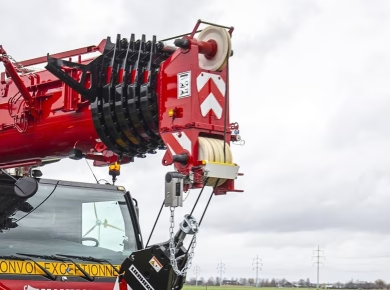Have you ever wondered what it might be like to pack up your life into a single bundle and live on the road, with nothing but a few essentials and an iron will to survive? It’s hard to imagine, but for hobos during the Great Depression of the 1930s, this was the reality. With widespread unemployment and poverty at unprecedented levels, people were forced to leave their homes and travel across the country in search of work, food, or even just hope. Many of these travelers became known as hobos—men and women who roamed the railways, highways, and fields with minimal belongings, often on foot or hopping onto passing trains.
These individuals knew how to live with the bare minimum and keep moving forward no matter what hardships they faced. For a hobo, carrying only what was essential meant knowing how to survive with just a few carefully chosen items. Here’s a look at 10 essential items the 1930s Hobo carried—a fascinating mix of practicality, ingenuity, and resilience. Let’s dive into what made these items critical for a hobo’s journey, and why, even today, they represent survival essentials.
1. Bindle (The Classic Hobo Stick-and-Bag)
Picture the classic image of a hobo: a stick slung over one shoulder with a small sack tied to the end. This makeshift bag, known as a bindle, wasn’t just an iconic image; it was an essential part of hobo life. Made from a handkerchief or piece of cloth, the bindle was tied to the end of a stick and carried over the shoulder. Inside, it held all a hobo’s worldly possessions, from a spare shirt to whatever small trinkets they might have found along the way.
This simple piece of equipment allowed hobos to keep their hands free and distribute the weight evenly, making long treks more manageable. It might seem like a tiny detail, but having a functional way to carry belongings made all the difference when you were constantly on the move.
2. A Trusty Pocket Knife
If you’ve ever spent time outdoors, you’ll know the value of a good pocket knife. For hobos, a pocket knife was absolutely indispensable. Used for everything from preparing food to crafting makeshift tools or defending oneself, a sturdy knife was a multi-purpose survival tool. With one simple blade, a hobo could cut rope, whittle sticks for firewood, or even open canned food. And in a world where every ounce of space in the bindle mattered, the pocket knife’s compact size was ideal.
Interestingly, pocket knives often served as a kind of “insurance policy” in case the hobo came across barbed wire fences or was lucky enough to catch a fish. Survival often meant improvisation, and a good pocket knife allowed for quick and creative problem-solving.
3. Matches or Flint for Fire Starting
When you’re out on the road with no shelter, the ability to start a fire is as important as finding food or water. Hobos carried either a box of matches or a piece of flint to light a fire, providing warmth on cold nights and a way to cook whatever food they could scrounge. Beyond warmth and cooking, fire also offered a sense of security against wildlife, and in some cases, unwanted human company.
Matches were light and easy to carry but had to be kept dry—a challenge for anyone living outdoors. Flint, on the other hand, was a more durable (if slightly more cumbersome) solution that some preferred. It took skill to use, but once mastered, it allowed for a consistent fire-starting method that didn’t rely on the weather.
4. A Tin Can or Metal Cup
This might seem like a strange item to include, but a simple metal cup or tin can could serve multiple purposes. With it, a hobo could boil water for drinking, cook small meals, or eat directly from it—no need for fancy plates or cookware. Hobos would often reuse a can they found, especially if it was large enough to cook small amounts of food in or sturdy enough to withstand heat.
Imagine the ingenuity it took to make one item so versatile. Tin cans were even sometimes fashioned into makeshift stoves or used to carry food found along the way. For the hobo, simplicity and utility were key, and a tin can was both.
5. Blanket or Bedroll
Hobos were constantly on the move and rarely slept in traditional shelter. A good blanket or bedroll provided a small amount of comfort, insulation, and protection from the elements. Some hobos would even line their blankets with old newspapers for added warmth. Bedrolls could be attached to their bindles or slung over the shoulder, ensuring they were always prepared for a night outdoors, whether it was under the stars or beneath a railway bridge.
Finding rest on the road meant being resourceful. A blanket might not sound like much, but it often marked the difference between a night of bitter cold and something more bearable.
6. Sewing Kit for Quick Repairs
With limited clothing and no money to replace worn-out items, a small sewing kit became a hobo’s best friend. Typically, the kit included a needle and some thread, allowing hobos to mend torn clothes, patch their bindles, or even repair holes in shoes. These sewing kits were often homemade, with thread wrapped around the needle or tucked into a small scrap of fabric.
Today, it’s easy to toss out a shirt if it gets ripped, but for hobos, every item had value. They didn’t have the luxury of new clothes, so being able to stitch and repair on the go was crucial.
7. Canned or Dried Food
Food wasn’t guaranteed, and finding it was often a challenge. Hobos carried non-perishable items like canned beans, dried fruit, or sardines—foods that didn’t spoil quickly and provided vital calories for the road. A can of beans might not seem like much, but for someone who hadn’t eaten all day, it was sustenance and hope.
Some hobos were resourceful enough to keep a small stash, rationing it out carefully. Others traded work for food or foraged. The ability to carry a bit of food meant a safety net on long, empty stretches.
8. Map or Local Guide
Navigating unfamiliar places was a constant reality for hobos. A map was an invaluable asset, particularly one that included local train routes or marked out regions known for work opportunities. Of course, not every hobo had access to a printed map, so many relied on “hobo symbols” left on fences or buildings—simple signs drawn in chalk or coal that communicated warnings, tips, or safe spots to others on the road.
These makeshift maps fostered a sense of community and mutual aid, allowing hobos to navigate the hardships together, even if they had never met before.
9. Small Coin Purse for Any Cash Earned
Money was rare, but when hobos managed to get some cash, a coin purse provided a way to keep it safe. Since losing a few coins could mean going without food, a secure place to store cash was essential. For some, this purse held their only savings, and for others, it was a place to keep lucky trinkets or sentimental items.
Carrying just a small amount of money offered a kind of independence, too. Even a few cents could buy a cup of coffee or a cheap meal in the right place, helping hobos feel human in the midst of their struggles.
10. Personal Keepsakes or Talismans
Surviving as a hobo was more than just physical endurance; it was also a mental and emotional journey. Many carried small keepsakes like a photograph, a lucky charm, or a memento from home. These items served as reminders of family, love, or better times and gave strength when hope was hard to hold onto.
Whether it was a small token given by a loved one or a simple item picked up along the journey, these keepsakes provided an emotional anchor, a reminder of what they were working toward.
A 1930s Legacy of Resilience
The essentials that a 1930s hobo carried weren’t just items; they were symbols of resilience, resourcefulness, and adaptability. Every piece was a lifeline, carefully chosen and vital for survival in an era of extreme poverty and hardship. Today, we might view these items as relics of the past, but they serve as powerful reminders of what people endured and how they survived with little more than a bindle and a strong spirit.
As you reflect on these essentials, consider the lessons of simplicity, adaptability, and endurance they represent—qualities that can be applied, perhaps, to our own journeys in life, even if we never set foot on a railway track.
Read Next:
You Are Wiser and More Resilient If You Have Had These 8 Experiences
How Does a Healthy Lifestyle Look Like?







